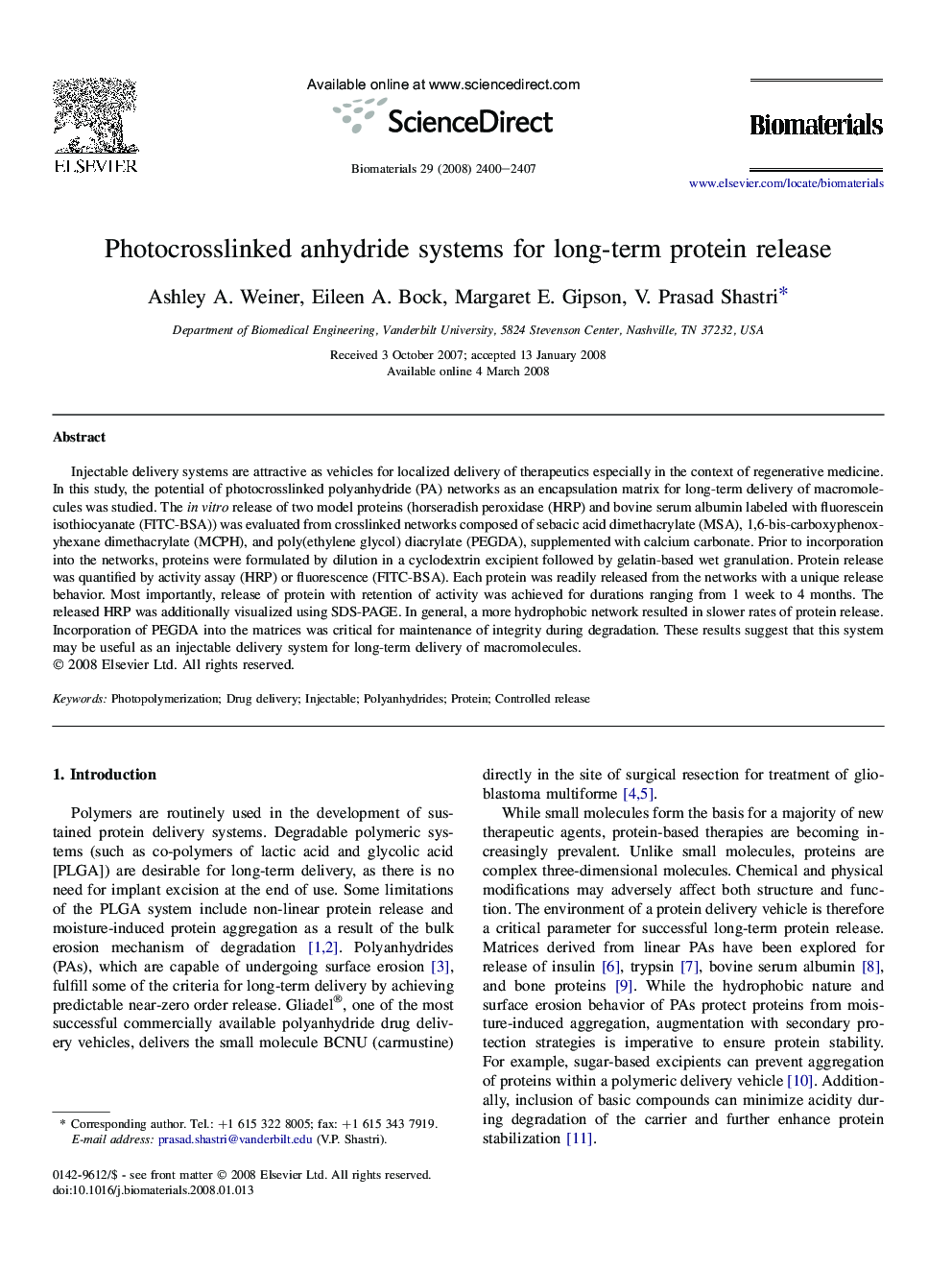| Article ID | Journal | Published Year | Pages | File Type |
|---|---|---|---|---|
| 10128 | Biomaterials | 2008 | 8 Pages |
Injectable delivery systems are attractive as vehicles for localized delivery of therapeutics especially in the context of regenerative medicine. In this study, the potential of photocrosslinked polyanhydride (PA) networks as an encapsulation matrix for long-term delivery of macromolecules was studied. The in vitro release of two model proteins (horseradish peroxidase (HRP) and bovine serum albumin labeled with fluorescein isothiocyanate (FITC-BSA)) was evaluated from crosslinked networks composed of sebacic acid dimethacrylate (MSA), 1,6-bis-carboxyphenoxyhexane dimethacrylate (MCPH), and poly(ethylene glycol) diacrylate (PEGDA), supplemented with calcium carbonate. Prior to incorporation into the networks, proteins were formulated by dilution in a cyclodextrin excipient followed by gelatin-based wet granulation. Protein release was quantified by activity assay (HRP) or fluorescence (FITC-BSA). Each protein was readily released from the networks with a unique release behavior. Most importantly, release of protein with retention of activity was achieved for durations ranging from 1 week to 4 months. The released HRP was additionally visualized using SDS-PAGE. In general, a more hydrophobic network resulted in slower rates of protein release. Incorporation of PEGDA into the matrices was critical for maintenance of integrity during degradation. These results suggest that this system may be useful as an injectable delivery system for long-term delivery of macromolecules.
